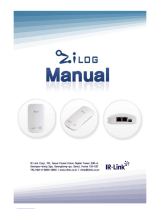
Zilog File System Configuration UM017914-1211
10
Zilog File System
User Manual
Zilog File System Volume Configuration
The Zilog File System provides a structure (ZFS_CONFIG_t) to accommodate the differ-
ent parameters of a volume. These structures are briefly described in Table 5.
Table 5. Description of Structure Members of ZFS_CONFIG_t
Member Description Values It Contains
vol_name This member contains the vol-
ume name; it starts with a letter
or an underscore (_) and con-
tains only letters, a number or
an underscore (_).
String of a maximum length of 16 bytes.
vol_type Volume type. This member con-
tains the type of the volume.
This member contains any of the following values:
ZFS_RAM_DEV_TYPE for a volume that resides
in RAM.
ZFS_EXT_FLASH_DEV_TYPE for a volume that
resides in either internal or external Flash.
vol_addr This member contains the start-
ing address of the volume.
Starting address of the volume.
vol_size Size of the volume in bytes. Size of the volume in bytes.
vol_blks Number of blocks present in the
volume.
For a RAM volume, contains 1. For a Flash vol-
ume, this value relates to the number of physical
erasable blocks that are present within the volume
memory range.
vol_secs Number of sectors present in
the volume.
Volume size ÷ ZFS_SEC_SIZE. The Zilog File
System supports only 512 bytes sector size. (The
ZFS_SEC_SIZE macro is defined to be 512).
pfn_drv_init Driver init function for file sys-
tem storage device.
For a RAM volume, contains RamDrv_Init. For
internal/external Flash volumes, place the function
named FS_<device>_Init.
pfn_drv_read Driver read function for file sys-
tem storage device.
For a RAM volume, contains RamDrv_Read. For
internal/external Flash volumes, place the function
named FS_<device>_Read.
pfn_drv_write Driver write function for file sys-
tem storage device.
For a RAM volume, contains RamDrv_Write. For
internal/external Flash volumes, place the function
named FS_<device>_Write.
pfn_drv_erase Driver erase function for file
system storage device.
For a RAM volume, contains RamDrv_Erase. For
internal/external Flash volumes, place the function
named FS_<device>_Erase.
pfn_drv_close Driver close function for file
system storage device.
For a RAM volume, contains RamDrv_Close. For
internal/external Flash volumes, place the function
named FS_<device>_Close.




















